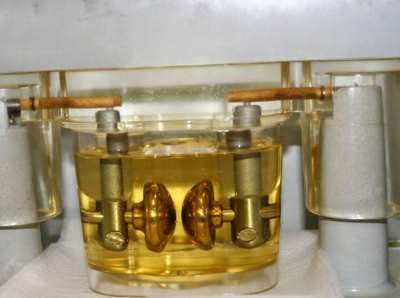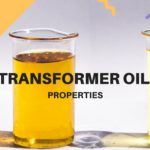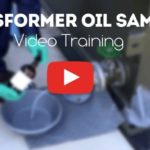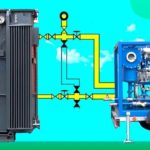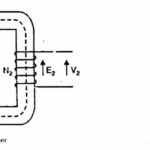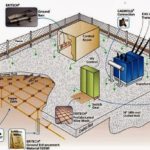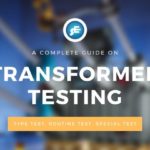What is Transformer Oil?
Transformer oil is mineral insulating oil derived from crude petroleum. It is a mixture of various hydrocarbons. It consists partly aliphatic compounds (open chain compounds) with the general formula CnH2n+2 and CnH2n.
Many oils also contain certain aromatic compounds (closed chain or ring compounds) related to benzene, naphthalene, and derivatives of these with aliphatic chains. Good transformer oil must insulate and prevent flash over of the exposed parts within the equipment and it must effectively transform the heat from the core to the radiating surface.
The characteristics of new transformer oil are given in IS 335/1983.
There is no single test to judge all the qualities of the oil. Each test is significant within its limits and provides only general information about the conditions of the oil.
If the dielectric strength is low, the oil is unfit for use regardless of any other condition.
Transformer Oil Tests
- Dielectric Strength
- Water Content
- Neutralization Value
- Interfacial Tension
- Dielectric Dissipation Factor Test for Corrosive Sulphur in Oil
- Test for Oxidation Stability
- Specific Resistance (Resistivity)
- Flash Point
- Pour Point
- Viscosity
- Sludge Test
- Dissolved Gas Analysis (DGA)
Dielectric Strength Test
The transformer oil under test is subjected to an AC electric field with continuously increasing voltage until the oil breaks down. This is also known as Breakdown Voltage Test of Transformer Oil.
The test cell shall be of glass or plastic and transparent and non-absorbent (Eg. Methyl Methacrylate Vessel) with effective volume between 300 to 500 ml.
.jpg)
The electrodes must be Copper, Brass, Bronze or Stainless steel and well polished having spherical shape with dip 12.5 mm to 13 mm. It shall have a spherical front as shown in the figure.
The electrodes shall be mounted horizontally in the cell and the axis shall be immersed at a depth of approximately 40 mm, The electrode gap shall be 2.5 ± 0.1 mm.
Before carrying out the test the cell shall be cleaned by rinsing with the test oil. The sampling vessel containing the test oil shall be gently agitated to have a homogeneous distribution of impurities and air bubbles to escape. The oil temperature at the time of testing shall be around 27°C (15°C to 35°C preferable).
An increasing AC voltage of rated frequency is applied to the electrodes, approximately at the rate of 2 kV/Sec, starting from zero up to the value-producing breakdown. The test kit will have provision for automatic switching off of the supply voltage within 0.02 second.
The test shall be repeated six times in the same cell filling and the arithmetic mean of the under test six of in results is noted as the electric strength or BDV (Break Down Voltage) of the oil under test.
Transformer Oil Treatment
Centrifugal separators can be used to remove finely divided solid particles and free water from the oil. But vacuum edge type filters are generally used for transformer oil treatment. It is a combined process of filtration, dehydration and de-aeration in filter units comprising edge type filter elements, oil heaters and vacuum chamber.
In the case of large transformers, oil is circulated through the purifying plant, oil is taken from the bottom and redelivered at the top. The circulation shall be preferable with the electrical equipment dead.
Inhibitors
Inhibiting an oil means adding a substance to delay oxidation. Inhibitors are now commonly used in both new and used transformer oil. Ditertiary Butyl Para Cresol (DBPC) is a generally used inhibitor, in proportion 2.5 to 3 parts per 1000 parts of oil by weight.
Even if the inhibitors are completely exhausted, there would be no unpleasant consequences. The useful life of transformer oil can be prolonged by three or four times by inhibiting the oil. The detection of DBPC in oil can be done by infrared spectroscopy, thin layer chromatography or gas chromatography.
New oils can be mixed with each other if they satisfy the same standard specifications. Inhibited oils can be mixed with each other, provided they contain the same inhibitor. Inhibited oils can be mixed with un-inhibited oils.
Some Common inhibitors for transformer oil are,
|
Inhibitor
|
Trade Name
|
|
Ditertiary butyl para cresol
8-Hydroxy Quinoline
Bis-methane
Azo-bis- ISO-but ronitrate
|
DBPC, IonalTopanol
Oxine
lonex 220, AN 2246
Abin
|
